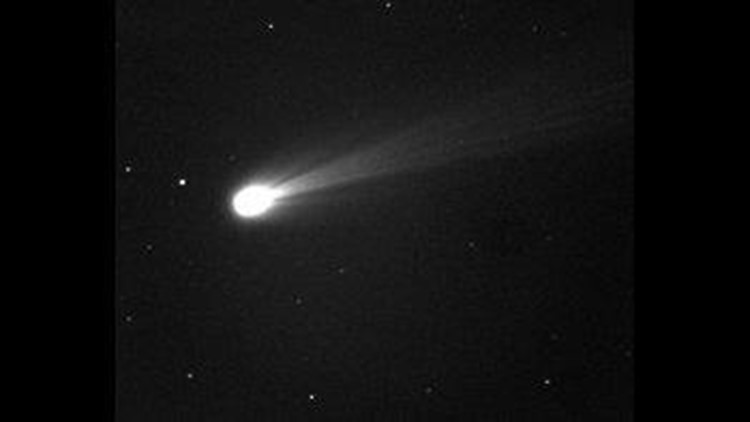(CNN) — Comet ISON is “alive and brightening dramatically,” according to an update on NASA’s Comet ISON Observing Campaign website. The “somewhat upbeat” forecast came a day after it looked like the sun may have cooked the core, or nucleus, of the closely watched comet.
Hopes are high that ISON will survive its Thanksgiving Day close encounter with the sun — skimming 730,000 miles above its surface — and emerge to put on a big sky show. It might even become visible to the naked eye, meaning everyone might be able see it, not just those with good telescopes.
The glare of the sun has blocked most ground-based observations for now, but NASA has a fleet of spacecraft watching as ISON plunges toward the sun. Two space telescopes recorded images of the comet after it started acting like it was falling apart. NASA’s STEREO satellite and later the ESA/NASA SOHO spacecraft both spotted ISON.
The images indicate that ISON is on course and “is seen to brighten … a reasonably bright tail might develop as the comet reappears,” said Padma Yanamandra-Fisher with observing campaign.
Despite the optimistic update, observing team members say they still can’t be sure the nucleus is intact or that ISON will survive perihelion, its closest approach to the sun. Bottom line, experts “don’t know if ISON will survive” and won’t know until it either vaporizes or emerges from the sun’s glare.
“I am cautiously optimistic that the comet will survive perihelion (going out on a limb here),” Yanamandra-Fisher said. Thursday’s observations by yet another satellite, the Solar Dynamics Observatory, may give us the answer, she said.
Comets are giant snowballs of frozen gases, rock and dust that can be several miles in diameter. When they get near the sun, they warm up and spew out some of the gas and dirt, creating tails that can stretch for thousands of miles. Most comets are in the outer part of our solar system. When they get close enough for us to see them, scientists study them for clues about how our solar system formed.
ISON was discovered in September of 2012 by astronomers Vitali Nevski and Artyom Novichonok using a telescope near Kislovodsk, Russia, that is part of the International Scientific Optical Network (ISON). ISON — officially named C/2012 S — was 585 million miles away at the time. Its amazing journey through the solar system has been chronicled by amateur astronomers and by space telescopes. NASA has even created a toolkit for ISON fans.
If it survives, Comet ISON will make its closest approach to Earth on December 26, and, no, it won’t hit us.



